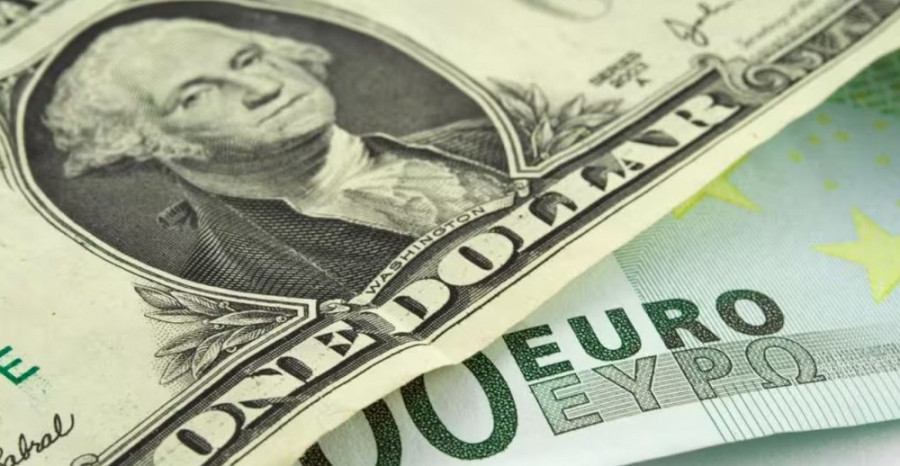
EUR/USD got stuck sideways before the weekend. We cannot say that the information environment was empty for the currency pair. No way! Judging by market moves in the last days of the week, we can draw clear and far-reaching conclusions based on the rhetoric of Jerome Powell and other Fed policymakers. Germany's inflation report was also an event of major importance as the CPI revealed easing inflationary pressure in the largest eurozone's economy. Nevertheless, despite a flood of macroeconomic data, EUR/USD could not leave a wide range of 1.0650 and 1.0800. The price printed a one-week high at 1.0800 and a one-week low at 1.0668. The instrument opened last at 1.0789 and closed on Friday at 1.0678, having reached the target.

On the whole, looking at the one-week chart of EUR/USD, we see that the buyers updated a multi-month high at 1.1034 two weeks ago but failed to settle the price at about 1.10. The price reversed its trajectory by 180 degrees and dropped by almost 400 pips to the levels at about 1.06. Here, the instrument was trapped in the above-mention trading range between 1.0650 and 1.0800. Though EUR/USD completed last week lower in favor of the bears, the downtrend came to a halt. The bearish momentum which was triggered mainly by the stronger-than-expected US nonfarm payrolls needs more catalysts. Fed policymakers, Jerome Powell, John Williams, and Lisa Cook, came up with comments that served as verbal intervention and provided the US dollar with support. However, it was not enough to encourage a powerful rally of the US dollar.
Powell &Co
From my viewpoint, traders underestimated the hawkish rhetoric in Powell's speech. Market participants focused on his phrase about "the disinflationary process" that the Fed's leader pronounced speaking at the Economic Club in Washington. Indeed, Jerome Powell admitted that the signs of waning inflation had been already detected in some economic sectors. At the same time, he pointed out that the central bank might need a protracted time to bring consumer prices down. Citing the Fed's leader, inflation rates in the US are likely to slow down to the target level not until 2024.
In this context, the Fed's Chairman noted that first, the central bank would go ahead with increasing the federal funds rate which had not achieved the level capable of pushing inflation down. Interestingly, he didn't specify what exact level was appropriate. Second, the regulator would maintain the restrictive monetary policy as long as necessary.
In other words, Jerome Powell sent a clear message that the Federal Reserve would raise interest rates by another 25 basis points not only in March but also at two further policy meetings. According to CME FedWatch Tool, the likelihood of a 0.25% rate hike in May is now estimated at 74%. Moreover, the chance of another round of monetary tightening in June is measured at 38%.
Powell's colleagues, John Williams and Lisa Cook, also made hawkish comments last week. For instance, New York Fed President John Williams, who is a voting member of the FOMC, stated that the central bank is facing a lot of work in terms of interest rates, bearing in mind that inflation remains at unacceptably elevated levels. Williams assumed that service prices could stay too high. If this scenario comes true, the Federal Reserve will need higher interest rates.

In turn, member of the Board of Governors Lisa Cook, who also has a voting right, was on the same page with her colleague. She acknowledged that inflation was still way too high even despite some slowdown.
EUR in disgrace
The most significant report for the Eurozone last week came from Germany. The CPI reflected an annual decline in consumer inflation. Almost all metrics went down, thus confirming a slowdown in the euro area. Germany accounts for nearly a quarter of all inflation data employed in assessing inflation in the Eurozone.
The inflation report weighed on the euro. The selling pressure was escalated by some ECB policymakers who said that inflation in the Eurozone either reached its peak (Klaas Knot) or would top out earlier than in June (Francois Villeroy de Galhau).
Remarkably, following the ECB policy meeting in February, President Christine Lagarde prefaced another rate hike by 50 basis points in March but she posed a question about further moves in this direction.
In light of Germany's inflation report, market participants are speculating that the ECB is about to complete the ongoing cycle of monetary tightening. Some forex strategists, in particular Commerzbank, reckon that after a 0.5% rate hike in March (which is now considered a rock-solid decision), the ECB will scale down the pace of further rate hikes and increase its refinancing rate by 25 basis points in May. Moreover, the 0.25% rate hike could be the final one in the cycle. The level of 3.25% could be the ultimate size that will put an end to the cycle of monetary tightening. Some analysts believe that the rate hike in March will be the final point.
Conclusion
The general fundamental background for EUR/USD suggests a further downtrend. Indeed, Fed's policymakers still share the hawkish rhetoric, dropping hints about a few more rate hikes. In contrast, the ECB rhetoric looks like the bank is adding the finishing touches to the cycle. The lower CPI in Germany pushed the euro down, escalating selling pressure.
From the technical point, EUR/USD approached the lower border of the above-said trading range, i.e. the support level of 1.0650 which matches the lower line of the Bollinger bands on the daily chart. If the bears are able to overcome this obstacle, the lower downward target is seen at 1.0580 which corresponds to the upper border of the Kumo cloud on the same daily chart.